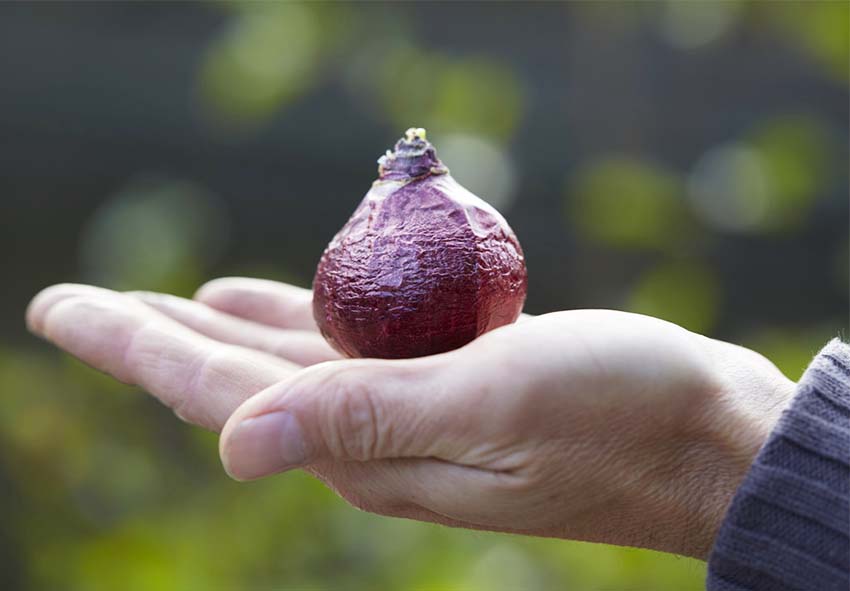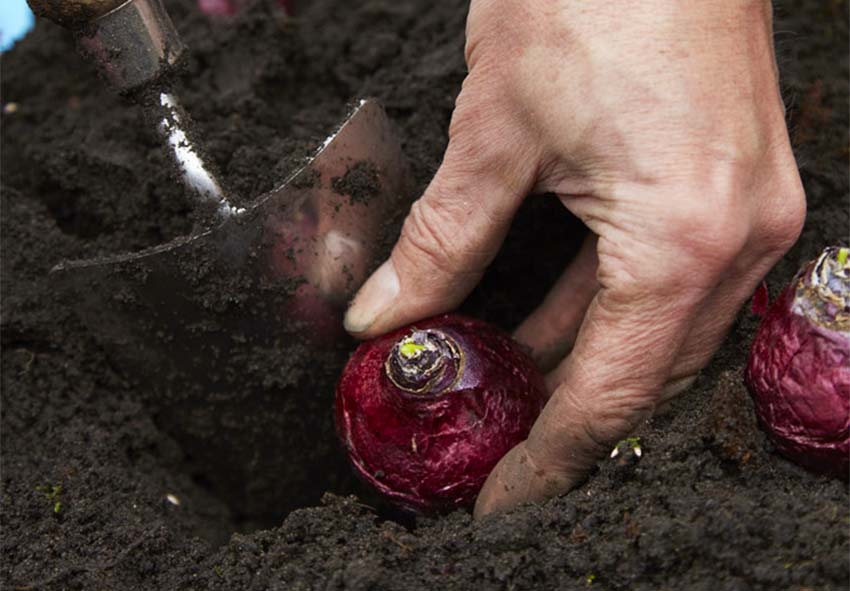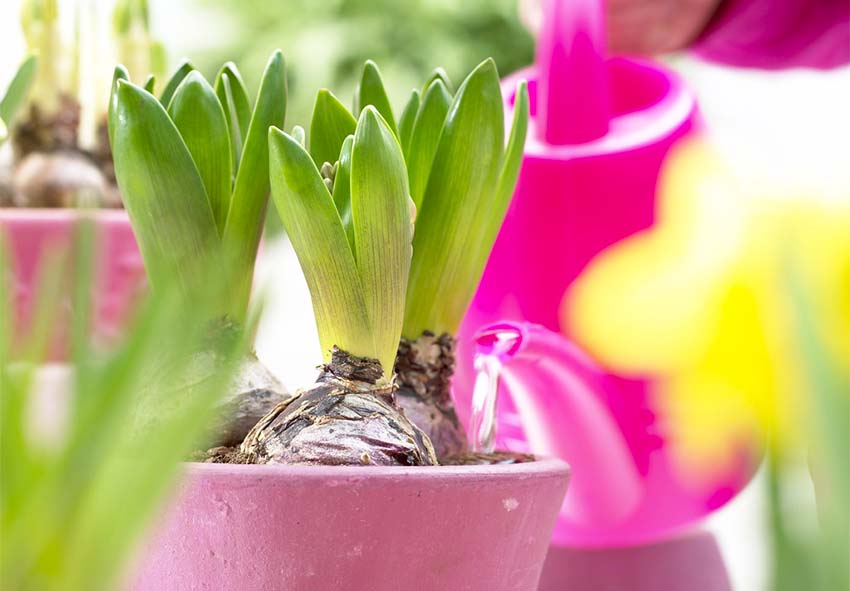Hyacinths are cherished for their vibrant colors and delightful fragrance, making them a favorite in many gardens. These spring-blooming bulbs add a splash of color and a lovely scent to any landscape. This guide will walk you through everything you need to know about planting hyacinth bulbs, from selecting the best bulbs and planting them correctly to ensuring they receive the care they need to thrive. Our gardening blog is a perfect place to find all the information you need!
Preparing to Plant Hyacinth Bulbs

To ensure a stunning hyacinth display, proper preparation is essential. This section will guide you through selecting quality bulbs, determining the best planting times, and choosing the ideal location for your hyacinths. Following these steps will set the foundation for vibrant and healthy blooms.
Choosing Quality Bulbs
Selecting the right bulbs is crucial for a successful hyacinth display. When buying bulbs from a store or nursery, look for ones that are:
- Firmness: Ensure bulbs are firm and not soft or mushy.
- Size: Opt for larger bulbs for bigger blooms.
- Appearance: Avoid bulbs with mold, cuts, or blemishes.
- Color: Look for healthy, plump bulbs with a uniform color.
- Roots: Check the base of the bulbs for healthy root growth.
- Smell: Avoid bulbs with an unpleasant odor.
When to Plant Hyacinth Bulbs
The best time to plant hyacinth bulbs is in the fall, before the ground freezes. In cooler climates, plant them in late September to early October. In milder regions, you can plant them as late as November. The bulbs need time to establish roots before winter sets in.
Selecting the Right Location
Choosing the right spot for planting hyacinths is vital for their growth and blooming:
- Sunlight: Select a location that receives full sun to partial shade. Hyacinths thrive in areas with plenty of sunlight.
- Soil Requirements: Ensure well-drained soil to prevent bulb rot. Hyacinths prefer sandy or loamy soil types.
- pH Levels: Aim for slightly acidic to neutral soil (pH 6-7). This pH range supports optimal nutrient absorption.
- Protection: Plant in areas protected from strong winds. Wind protection helps prevent damage to the delicate blooms.
Planting Hyacinth Bulbs

Once you’ve prepared your bulbs and selected the perfect spot, it’s time to get them in the ground. This section provides detailed instructions on soil preparation, planting depth, and spacing to ensure your hyacinths have the best start. Proper planting techniques will help your bulbs establish strong roots and prepare for a beautiful spring display. Look for more useful information in the full guide for hyacinths.
Soil Preparation
Hyacinths prefer well-draining soil rich in organic matter. Before planting, amend the soil with compost or well-rotted manure to improve its fertility and drainage. Aim for a soil pH between 6.0 and 7.0 for optimal growth.
Planting Depth and Spacing
Plant hyacinth bulbs about 6 inches deep, with the pointed end facing up. Space the bulbs 4 to 6 inches apart to give them room to grow and spread. Proper spacing helps prevent overcrowding and allows for better air circulation, reducing the risk of disease.
Step-by-Step Planting Process
Planting hyacinth bulbs correctly ensures that you will enjoy a spectacular display come spring. Here are some instructions for you:
- Digging the Holes: Dig individual holes or a trench 6 inches deep. Make sure the holes are well-spaced to allow for proper air circulation and growth.
- Placing the Bulbs: Place each bulb in its hole with the pointed end up. This positioning is crucial for the bulb to grow properly.
- Covering with Soil: Fill the holes with soil, gently firming it around the bulbs. Ensure there are no air pockets around the bulbs to promote healthy root development.
- Watering: Water the newly planted bulbs thoroughly to help settle the soil and encourage root growth. Proper watering ensures that the bulbs remain moist during their initial growth phase.
- Adding Mulch: Add a layer of mulch on top of the soil to help retain moisture and regulate soil temperature. Mulching also helps prevent weeds, which can compete with hyacinths for nutrients.
Caring for Hyacinths
After planting, hyacinths require ongoing care to thrive. This section covers essential maintenance tasks, including watering, light and temperature requirements, fertilizing, and pruning. With the right care, your hyacinths will reward you with stunning blooms year after year.
Watering Needs

Hyacinths need regular watering during their growing season. Keep the soil consistently moist but not waterlogged. Reduce watering once the flowers fade and the foliage begins to die back.
Fertilizing Hyacinths
Feed hyacinths with a balanced, slow-release fertilizer when the shoots first emerge in the spring. A second application after blooming can help the bulbs store energy for next year’s growth. Avoid over-fertilizing, as this can lead to weak growth and fewer flowers.
Pruning and Deadheading
Once the blooms fade, cut back the flower stalks but leave the foliage intact. The leaves continue to photosynthesize and provide energy to the bulbs for the next season. Only remove the foliage once it has turned yellow and died back completely.
Light and Temperature Requirements
Hyacinths grow best in full sun to partial shade. That’s why you need to know some main light and temperature preferences:
- Light
Hyacinths thrive in bright light conditions and require full sun to partial shade for optimal growth. Planting them in a location that receives at least 6 hours of direct sunlight daily will ensure vibrant and robust blooms. While they can tolerate partial shade, insufficient sunlight can result in fewer and smaller flowers. If you’re planting hyacinths in a garden bed, choose a sunny spot, and if you’re planting in containers, place them where they’ll get ample light.
- Temperature
Hyacinths need cool temperatures to establish and grow well. The ideal temperature for planting hyacinth bulbs is below 60°F (15°C), but it should not be freezing. During the winter, hyacinth bulbs require a chilling period of about 12-14 weeks at temperatures between 35°F to 48°F (2°C to 9°C) to break dormancy and prepare for spring blooming. Once the bulbs have sprouted, they prefer daytime temperatures around 60°F to 70°F (15°C to 21°C) and cooler nights to maintain their vibrant flowers and healthy growth.
Conclusion
Planting and caring for hyacinths can be a rewarding experience, bringing vibrant colors and delightful scents to your garden. By following these tips, from selecting quality bulbs and proper planting techniques to ensuring they receive the right care, you can enjoy beautiful hyacinth blooms each spring. Aftercare is also important, so find more information about hyacinth bulbs after flowering to provide the best care for next year’s blooms and ensure your plants remain healthy and vibrant. Happy gardening!
Frequently Asked Questions (FAQs) about Planting Hyacinth
1. When is the best time to plant hyacinth bulbs?
When is the best time to plant hyacinth bulbs?
The best time to plant hyacinth bulbs is in the fall, typically from September to November. This allows the bulbs to establish roots before the winter chill and ensures they are ready to bloom in the spring.
2. Can hyacinth bulbs be ordered from your online store?
Our online store Dutch-bulbs.com offers a wide selection of hyacinth bulbs in various colors, making it easy for you to add these elegant beauties to your garden. We source our bulbs from reputable growers to ensure you receive high-quality specimens. Simply browse our online catalog, select your preferred varieties, and follow the easy ordering process.
3. How much sunlight do hyacinths need?
Hyacinths need full sun to partial shade. Ideally, they should receive at least 6 hours of direct sunlight daily for the best blooms. They can tolerate partial shade, but full sunlight will result in more vibrant and abundant flowers.
4. What type of soil is best for planting hyacinth bulbs?
Hyacinths prefer well-draining soil with a neutral to slightly acidic pH level (6.0-7.0). It’s important to ensure the soil is loose and rich in organic matter to support healthy root development and growth.
5. How often should I water hyacinth bulbs after planting?
After planting, water the hyacinth bulbs thoroughly to help settle the soil and encourage root growth. During the growing season, keep the soil consistently moist but not waterlogged. Water regularly, especially during dry periods, but avoid overwatering as it can lead to bulb rot.
Published: 27.06.2024
